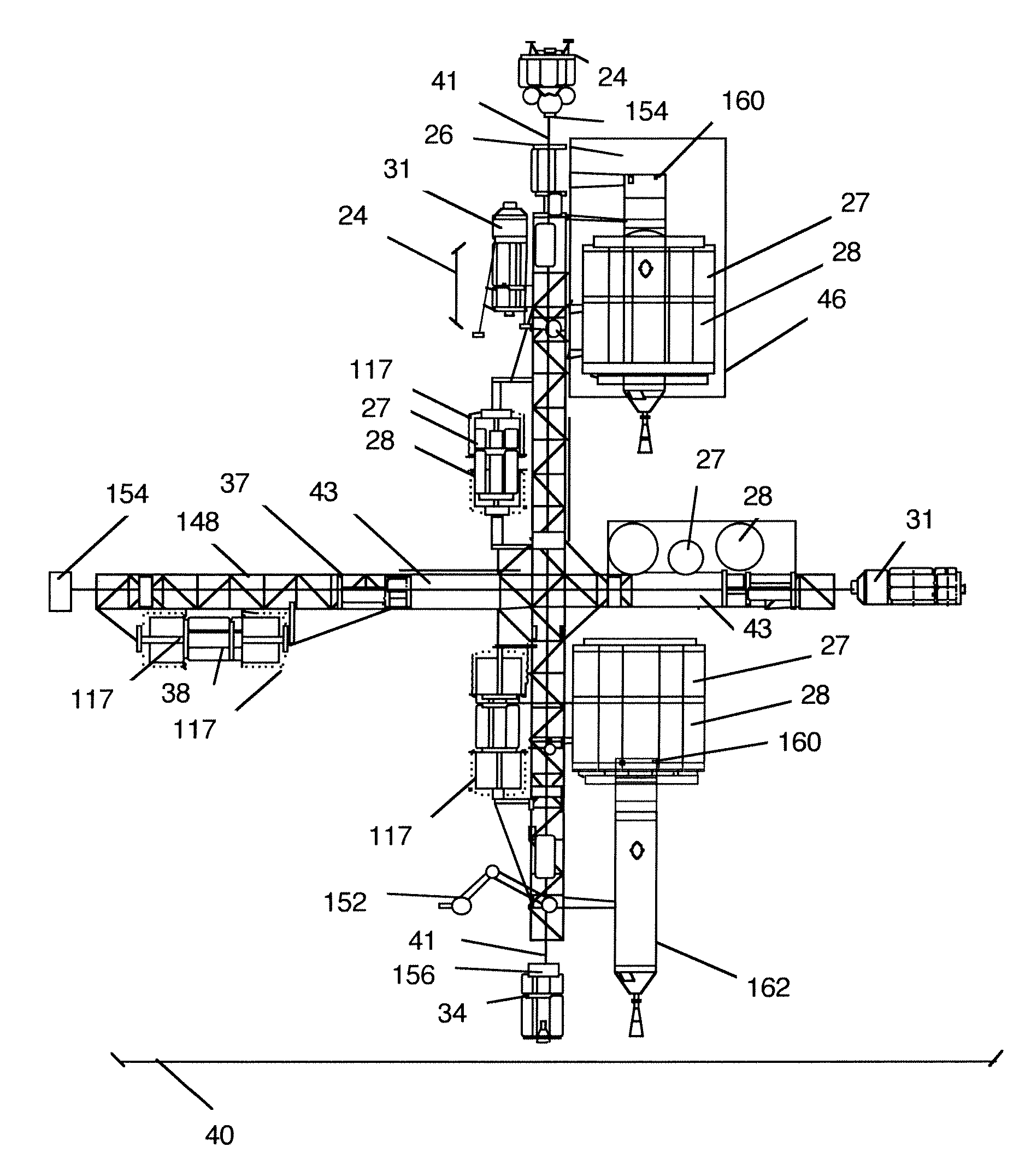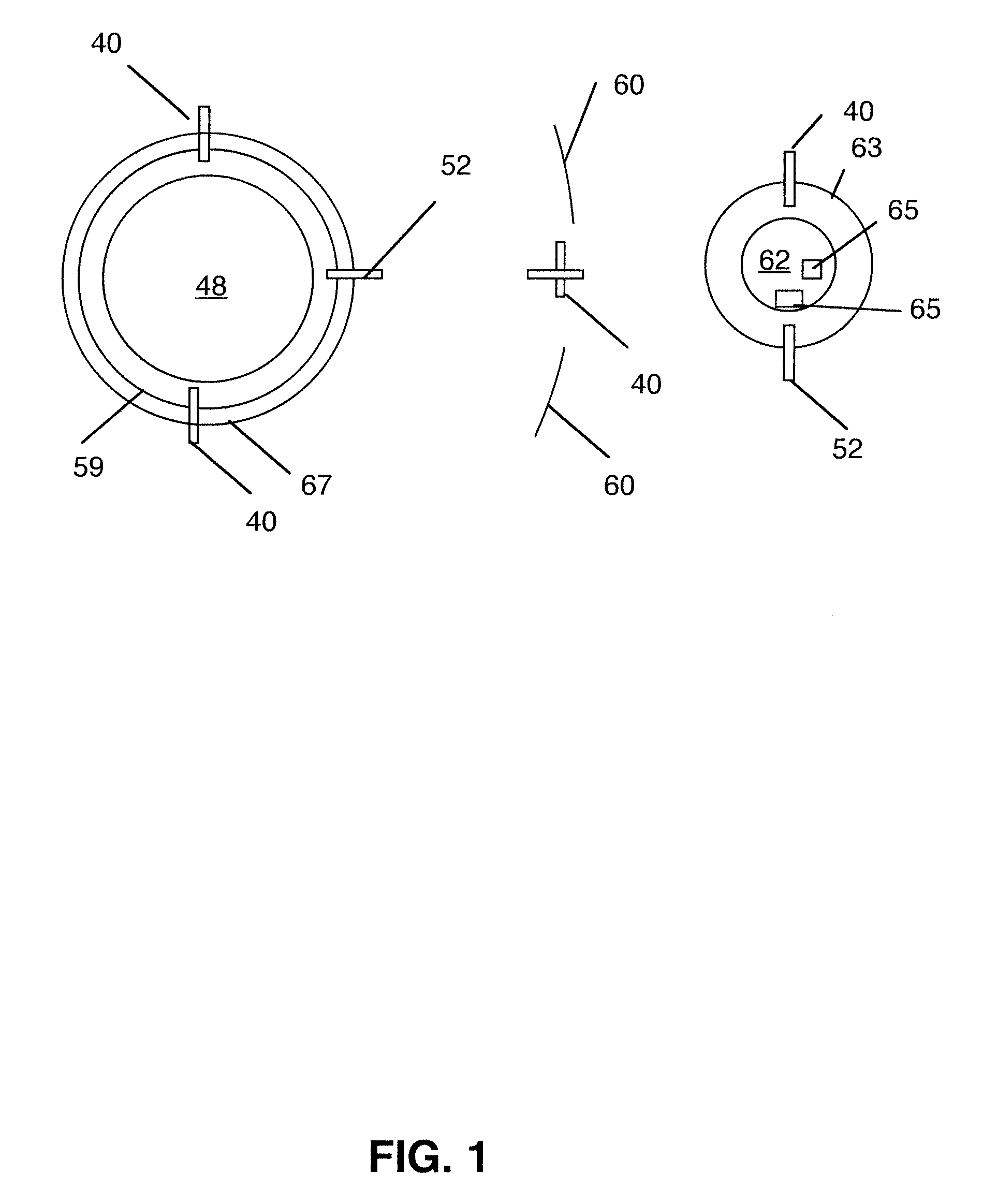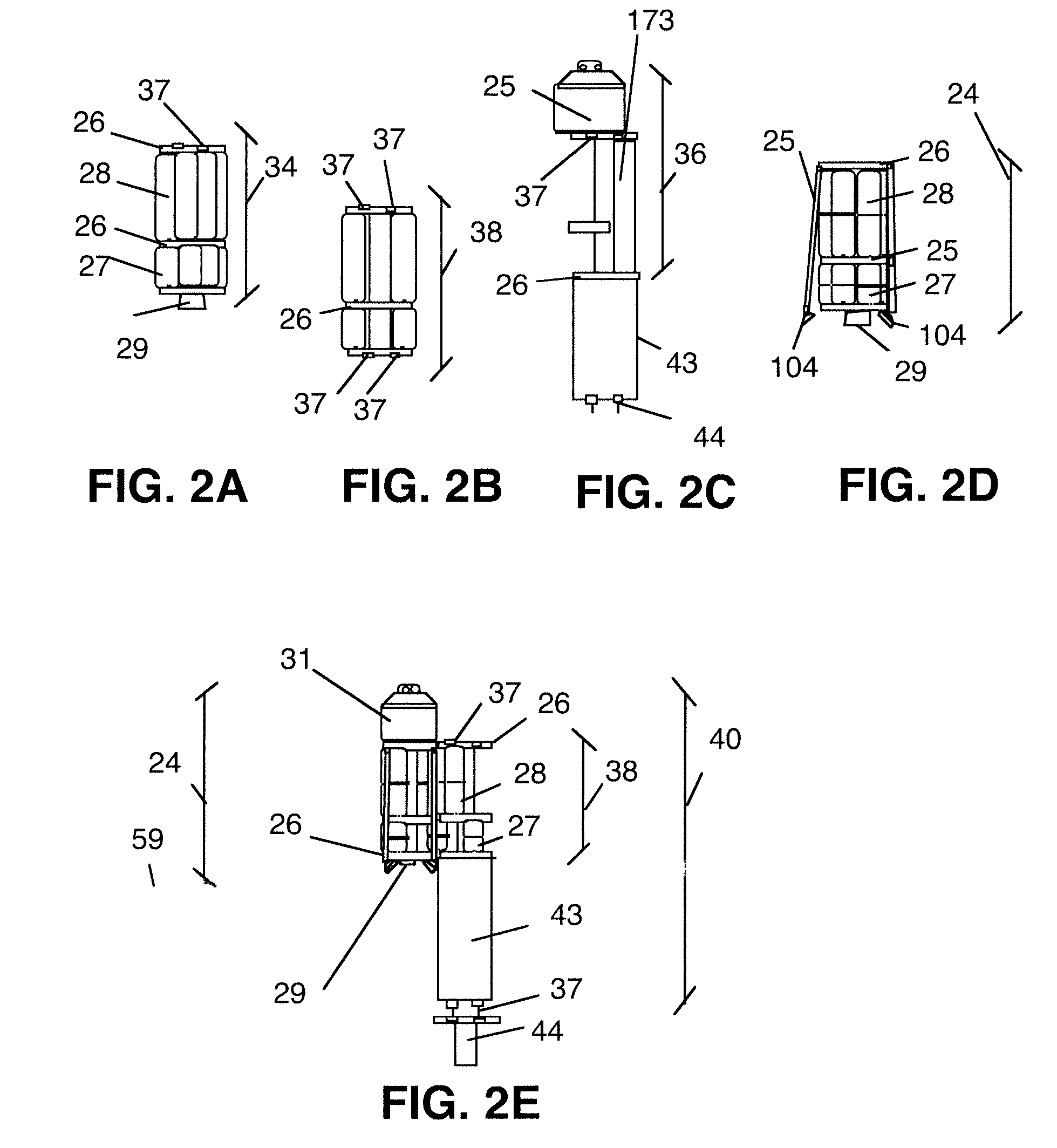Propellant depot in space
a technology of propellant depot and space, which is applied in the field of space transportation, can solve the problems of high transportation cost, slowing the growth of commercial space, and high transportation cost, and achieves the effects of increasing the efficiency of customer vehicles, increasing mass and length, and reducing costs
- Summary
- Abstract
- Description
- Claims
- Application Information
AI Technical Summary
Benefits of technology
Problems solved by technology
Method used
Image
Examples
Embodiment Construction
[0059]The propellant depot systems of the present invention offer an affordable commercial transportation solution for accessing space by combining existing technologies with innovation.
[0060]Expendable launch vehicles are the rule currently with only one partly reusable space shuttle vehicle being phased out as overly expensive. Future Reusable Launch Vehicles (RLVs) used in lunar transportation trade routes offer some potential affordability in the transportation to orbit and beyond Earth orbit, but the amount of cost reduction varies greatly. Commercial propellant depots can enhance the cost reduction required for mankind's movement off the planet. These evolutionary propellant depots and the RLVs using the propellant are further enhanced by innovation in both commercial depots and vehicles to provide affordable space transportation.
[0061]The present invention combines a consumable product, propellant, with various developed propellant sources, with space transportation vehicles ...
PUM
 Login to View More
Login to View More Abstract
Description
Claims
Application Information
 Login to View More
Login to View More - R&D
- Intellectual Property
- Life Sciences
- Materials
- Tech Scout
- Unparalleled Data Quality
- Higher Quality Content
- 60% Fewer Hallucinations
Browse by: Latest US Patents, China's latest patents, Technical Efficacy Thesaurus, Application Domain, Technology Topic, Popular Technical Reports.
© 2025 PatSnap. All rights reserved.Legal|Privacy policy|Modern Slavery Act Transparency Statement|Sitemap|About US| Contact US: help@patsnap.com



